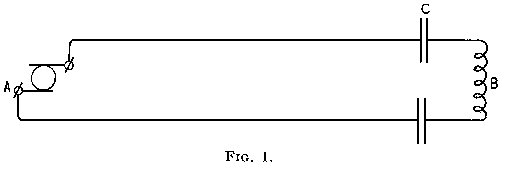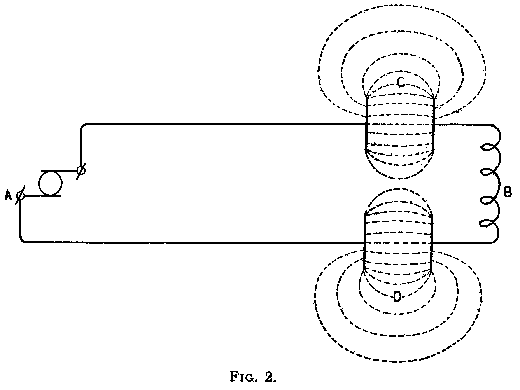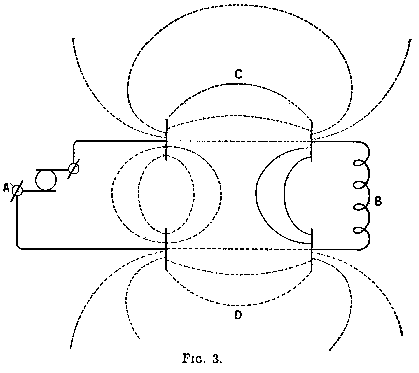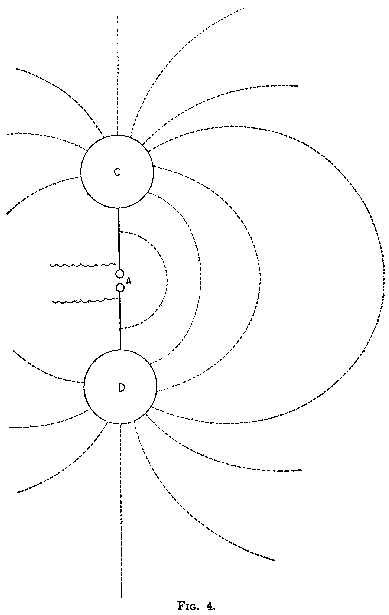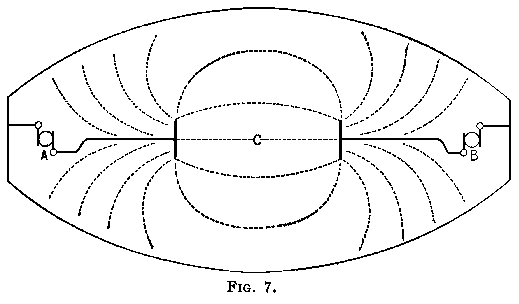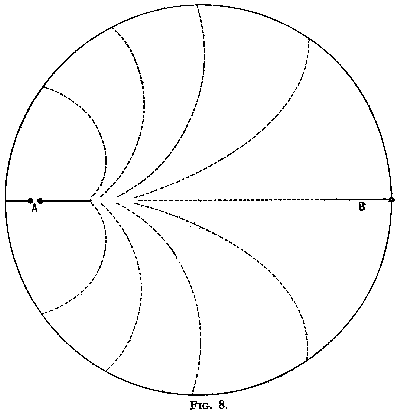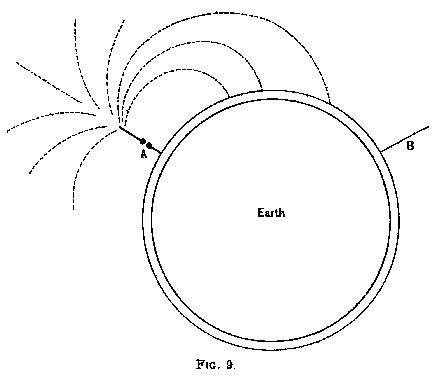| NEW YORK, January 13, 1902. |
I am sorry that I am prevented from attending your annual dinner to-night, especially as I should like to pay my respects to Marconi, the young man who had the monumental audacity to attempt and succeed in, jumping an electrical wave clear across the Atlantic Ocean.It was absolutely impossible for Mr. Edison to be with us to-night, but he said he would be thoroughly well represented when he sent his better half, (Applause). I may add that within the last ten days I had the pleasure of speaking to Mr. Edison himself with regard to Mr. Marconi, and he said that he had thought that sometime or other there might be signals flashed either way across the Atlantic without wires, but that he did not know when, and being pre-occupied, he did not think he would have time to do it himself, and he said to me: "Martin, I'm glad he did it. That fellow's work puts him in my class. He is a worker. It is a good thing we got him young."Yours,
EDISON.
I am sorry that it is not in my power to attend the dinner of the AMERICAN INSTITUTE OF ELECTRICAL ENGINEERS to be given this evening, at which Mr. Marconi is to be the guest of honor. The results already obtained by Mr. Marconi mark him as a man who has been a benefactor of the race, and his latest achievements seem to give promise of still greater services to mankind. I wish it were possible for me to be present to say to him in person, on behalf of the City of New York, how highly his scientific labors are appreciated. Asking you to convey to him my regards and best wishes, I am, respectfully,I hold before you, fellow-members of the INSTITUTE, the record of the dinner given to Cyrus W. Field in this city thirty-five years ago, when, after labors that were superhuman and devotion and courage that were almost immortal, the Atlantic cable had at last been finally and successfully laid. Mayor Low's father presided at that dinner, and this is Prof. Morse's own copy of the record. I thought it would be interesting to bring it out of my little collection this evening and put it on the table.
SETH LOW,
Mayor.
I regret deeply that a previous engagement for the evening of Monday will debar me of the pleasure of accepting the invitation that I have received from Prof. Sever to be present at the dinner tendered by the AMERICAN INSTITUTE OF ELECTRICAL ENGINEERS to Signor Marconi. I greatly regret my enforced absence for I should enjoy being able to join in your tribute of respect to the distinguished inventor, and in felicitating him upon having placed his name on the roll of the great discoverers and the great benefactors of the human race, for there appears to be every reason to believe that the most important practical results will follow in due time from Signor Marconi's successful experiments. Pray tender to your distinguished guest an expression of my sincerest congratulations and high regard, and believe me,From Capt. Chadwick of the United States Navy, whose name is remembered whenever we celebrate American victory and American valor, the following was received:Very truly yours,
NICHOLAS MURRAY BUTLER.
I greatly regret my inability to attend the dinner in honor of Mr. Marconi. It would afford me great pleasure to be present to give in evidence my esteem and regard for him. I know him well enough to know that his genius is equalled by a modesty and reticence of statement, for which I have an equal admiration with the best. When he told me last Spring of his hopes, I knew he would do more than he mentioned. The result has more than justified expectancy.I will also read the following letter to Mr. Rice as Chairman of the committee:
F. E. CHADWICK.
Replying to your kind invitation which was delivered during my absence from the city, I beg you to transmit to the INSTITUTE my thanks for the honor proffered. I feel that I could not rise to the occasion, and regret not being able to contribute to the pleasure of the evening; but I wish to join the members in heartily congratulating Mr. Marconi on his brilliant results. He is a splendid worker, full of rare and subtle energies. May he prove to be one of those whose powers increase and whose mind feelers reach out further with advancing years for the good of the world and the honor of his country.Permit me to say, gentlemen, even if it be a personal allusion, that from my beloved friend Tesla these ten years gone, I learned to believe that it would be possible to do what Mr. Marconi has now done.Yours very truly,
NIKOLA TESLA.
Your letter of January 10th, conveying the kind invitation of the AMERICAN INSTITUTE OF ELECTRICAL ENGINEERS to join with them on this Monday evening, was delivered while I was away from the city, in Washington. I regret to say that I am unable to accept the invitation. I am compelled to return to Washington this afternoon to attend to matters in connection with the laying of the Commercial Pacific Cable. I congratulate the society upon its distinguished guest. I am very sorry I cannot be there to meet him.I wish to say that Mr. Ward called me up on the telephone and asked me to take Mr. Marconi by the hand and shake it, and say that everything that would further the cause of communication between the hemispheres he was with and for.Yours very truly,
GEORGE G. WARD.
Absent because of previous engagements of importance from the dinner which the AMERICAN INSTITUTE OF ELECTRICAL ENGINEERS gives in honor of Signor Marconi, I beg you to offer my assurance that I am present in spirit and rejoice in the sympathy shown for our illustrious countryman who adds his own to the other great Italian names of Volta, Galvani, Pacinotti and Ferraris in the history of electrical science. The new invention of Signor Marconi whose development will unite more and more firmly the new and old world in all their relations, is really an inestimable victory of human genius over the forces of nature; a noble conquest of civilization and mankind. I salute my glorious compatriot, and thank the worthy and high honorable Association which so fraternally welcomes and lauds him and his achievement.If you will look at your menus, gentlemen, on the second page you will find enumerated one or two of the European societies to which our guest of honor belongs. We have deemed it fit and appropriate that with them this evening we should exchange fraternal greetings, and one of the officers of the INSTITUTE, in conference with President Steinmetz, has prepared, with the permission of Mr. Marconi, cable messages, which, with your approval and consent, we shall take pleasure in forwarding. I have pleasure in calling upon one of our members, not less well-known in Italy than in this, his own country, Mr. John W. Lieb, who was associated with the Edison Company in Milan for years, to read you the despatches which it is proposed to forward.
THE ITALIAN AMBASSADOR TO THE UNITED STATES.
